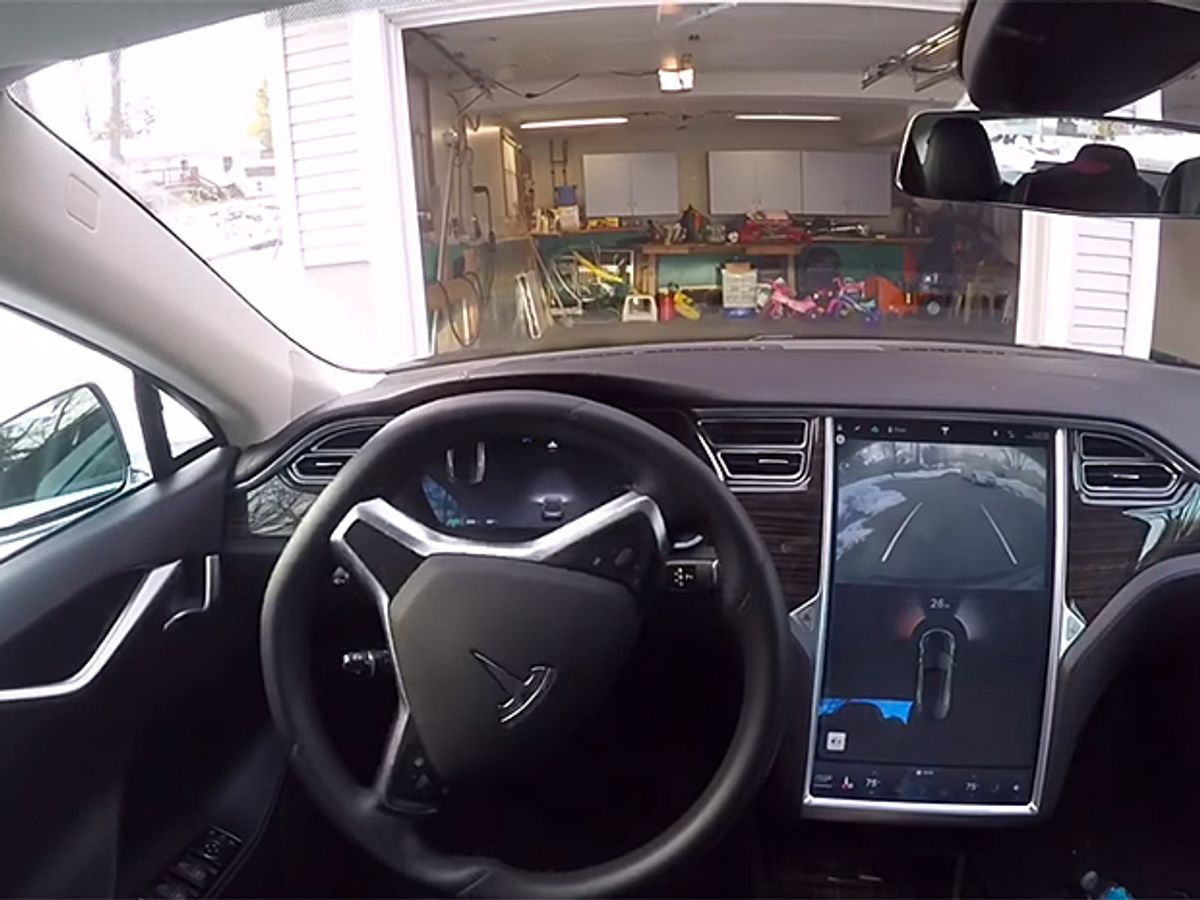Tesla Motors has just uploaded to its customers "Summon," a feature that lets you order your car to pick you up or park itself—right down to opening and closing the garage door.
The company says it "would like" owners to use of Summon only on private property, which means it will come or go a few hundred meters at the most. It’s just one more example of the company's clever use of free beta-testing. By crowdsourcing its customer base the company can wrangle data for far less money than, say, Google spends on its fleet of experimental driverless cars.
In the video the car is put through its motions by means of the standard Tesla remote, the same as customers have used with the original version of the AutoPark feature, released last year. But the company says you can also do it through a smartphone, which will in any case be necessary in future, when customers start summoning their cars from a distance.
When in the future—and over how big a distance? “In two years you'll be able to summon your car from across the country. If your car is in New York and you are in Los Angeles, it will find its way to you,” says Tesla chieftain Elon Musk, in another of his trademark outrageous predictions.
Well, Musk does go on to admit that he’s talking only of what will, should or might be possible technically in 2018—not what road safety regulators will allow. Remember, Summon comes as a simple over-the-air software update. It’s rather likely that regulators will want Tesla to add more than that before letting their cars go solo on the open road.
One obvious addition to the Tesla suite of sensors would be laser ranging, or LIDAR, which is getting better and cheaper all the time. But Musk remains an industry holdout on the subject, having said just three months ago, “I’m not a big fan of LIDAR, I don’t think it makes sense in this context.”
One thing about cars that drive themselves with nobody inside: if they crash into something inanimate, nothing’s lost but money. That’s why dedicated lanes for passenger-free vehicles could be just what the doctor ordered to speed driverless technology to the market.
And not all—or even most—of such traffic would consist of cars answering their masters’ call like a faithful horse. Most would be trucks carrying raw materials, groceries—or maybe just pizza.
Philip E. Ross is a senior editor at IEEE Spectrum. His interests include transportation, energy storage, AI, and the economic aspects of technology. He has a master's degree in international affairs from Columbia University and another, in journalism, from the University of Michigan.



